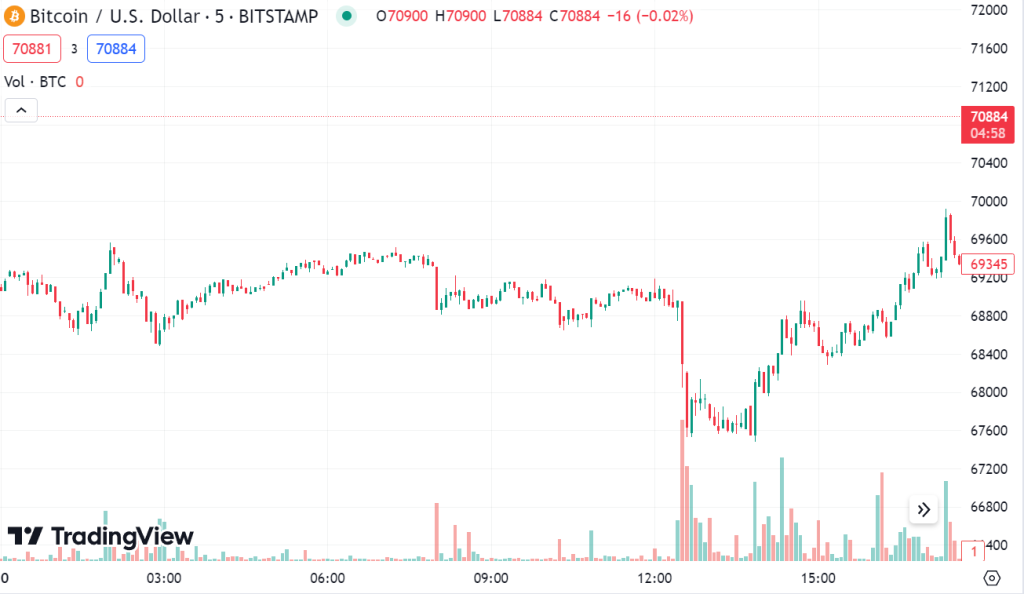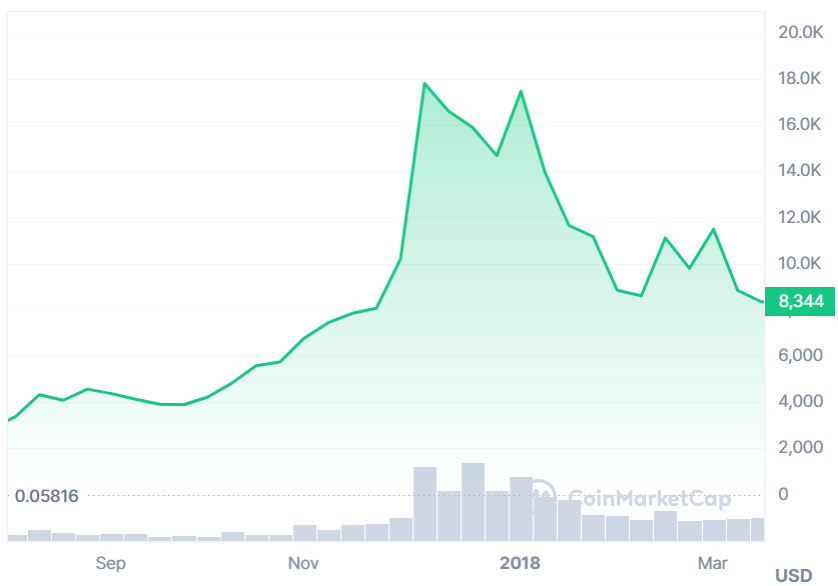Bitcoin Demand to Rise on Back of ‘Unsustainable’ Deficit, Inflation, says Grayscale
Publikováno: 11.4.2024
According to Grayscale, recent inflation figures may have a short-term negative impact on crypto, but continuous inflation will ultimately increase sentiment towards cryptocurrency.
The post Bitcoin Demand to Rise on Back of ‘Unsustainable’ Deficit, Inflation, says Grayscale appeared first on Cryptonews.
According to Grayscale, recent inflation figures may have a short-term negative impact on crypto, but continuous inflation will ultimately increase sentiment towards cryptocurrency.
Inflation refers to the prolonged increase in the general price level of goods and services in an economy over time, usually resulting in a decline in the purchasing power of fiat currency.
In March, the Consumer Price Index (CPI) statistics exceeded expectations. Inflation grew by 0.4% month-on-month and 3.5% year-on-year.
This was in contrast to the Dow Jones economists’ survey estimates, which predicted a 0.3% month-on-month and 3.4% year-on-year growth.
This difference was mainly influenced by increases in the cost of shelter and fuel, as shown in a report released by the US Bureau of Labour Statistics.
Interest rate increases are used as a tool to reduce inflation by slowing economic activity, lowering consumer spending and business investment, strengthening the currency, and altering expectations about future inflation. These impacts combine to reduce inflationary pressures in the economy.
Therefore, this unexpected increase in inflation has lowered the confidence in the possibility of the Federal Reserve lowering interest rates in the coming months.
According to CME’s FedWatch tool, at the time of writing traders estimate the probability of a June rate decrease at only 20.6%, compared to 45.9% for September.
This indicates that market analysts expect the US Federal Reserve to hold interest rates constant in May and June, with the first likely rate cut coming in September.
This prolongs the economy’s slowed state, resulting in less volume flowing into assets like Bitcoin and investors decreasing their position. As evidenced by Bitcoin’s price action on April 10th, which fell by 2.5% in response to the unexpected CPI figures. Although, correcting later that day.

In the past, the 10-year real interest rate spiked, and Bitcoin’s price fell dramatically in correlation.

From December 2017 to January 2018, the 10-year real interest rate surged from 0.573 to 0.873, as reported by the Federal Reserve Bank of St. Louis. During which, Bitcoin experienced a 28% decline.

Grayscale – Inflation Is In Crypto’s Favour
Grayscale’s managing director of research, Zach Pandl argued in favour of the current negative market sentiment, admitting rising inflation to be a “short-term negative for crypto,” with high inflation “The [Federal Reserve] is unlikely to cut rates for a while.”
Instead, he cited events like the Bitcoin halving, rising economic growth, and growing crypto adoption as factors that will drive Bitcoin’s price, stating:
“Bitcoin halving and adoption trends like tokenization should create a supportive environment for crypto markets.”
Pandle’s opinion, on the other hand, was based on the belief that cryptocurrency will see long-term benefits from increased interest rates.
As inflation rates continue to rise and fiat currency becomes devalued, store-of-value assets such as Bitcoin will continue to be a “hot commodity as the United States government continues to overspend and keep interest rates high,“ Pendl claims.
However, this is not without its doubts. Although Bitcoin has consistently proven to be a successful long-term store of value since its launch in 2010, its high volatility makes it an unpredictable investment, with many long periods in the red.
Therefore, investors may gravitate toward less volatile assets, such as conventional bonds and term deposits.
The post Bitcoin Demand to Rise on Back of ‘Unsustainable’ Deficit, Inflation, says Grayscale appeared first on Cryptonews.